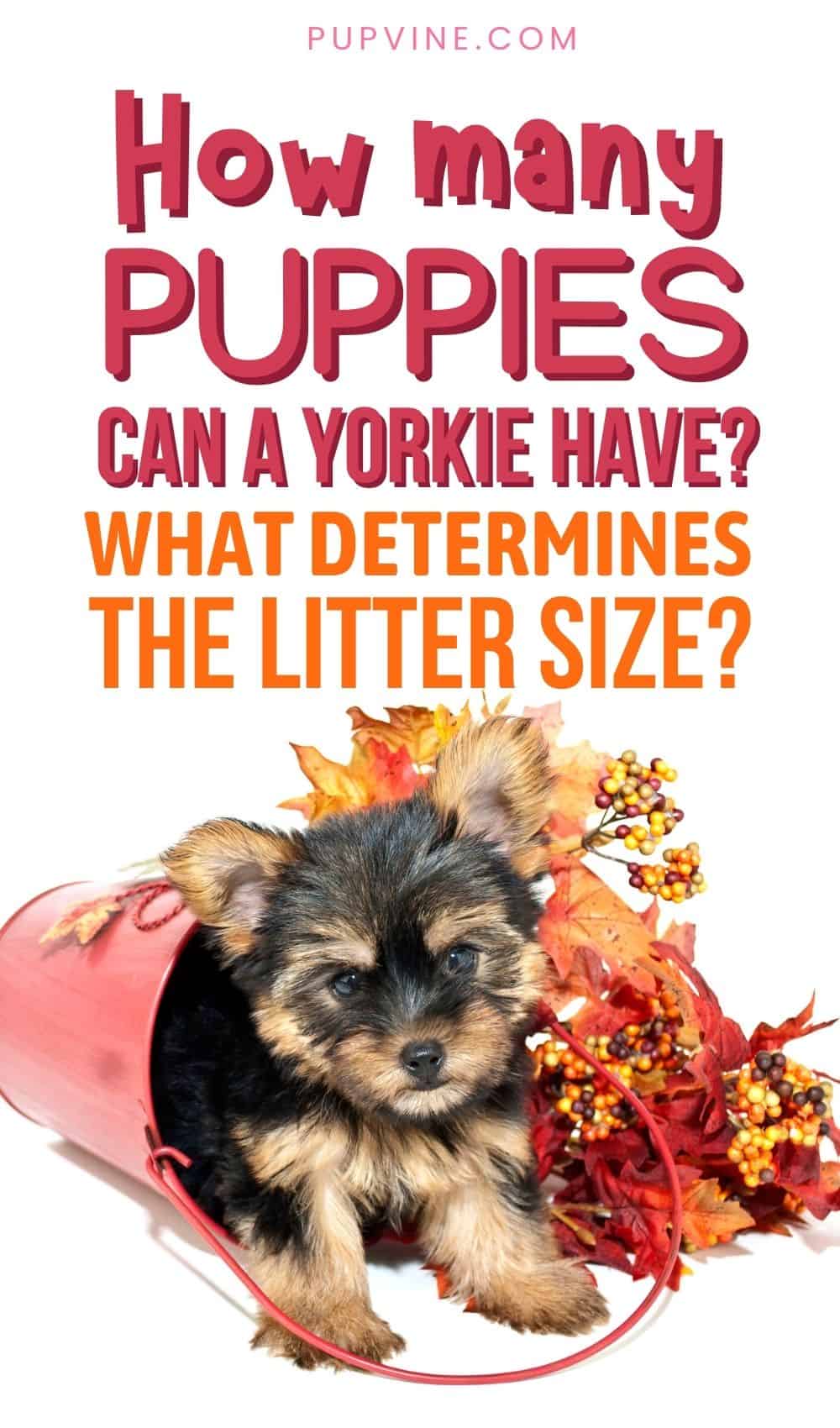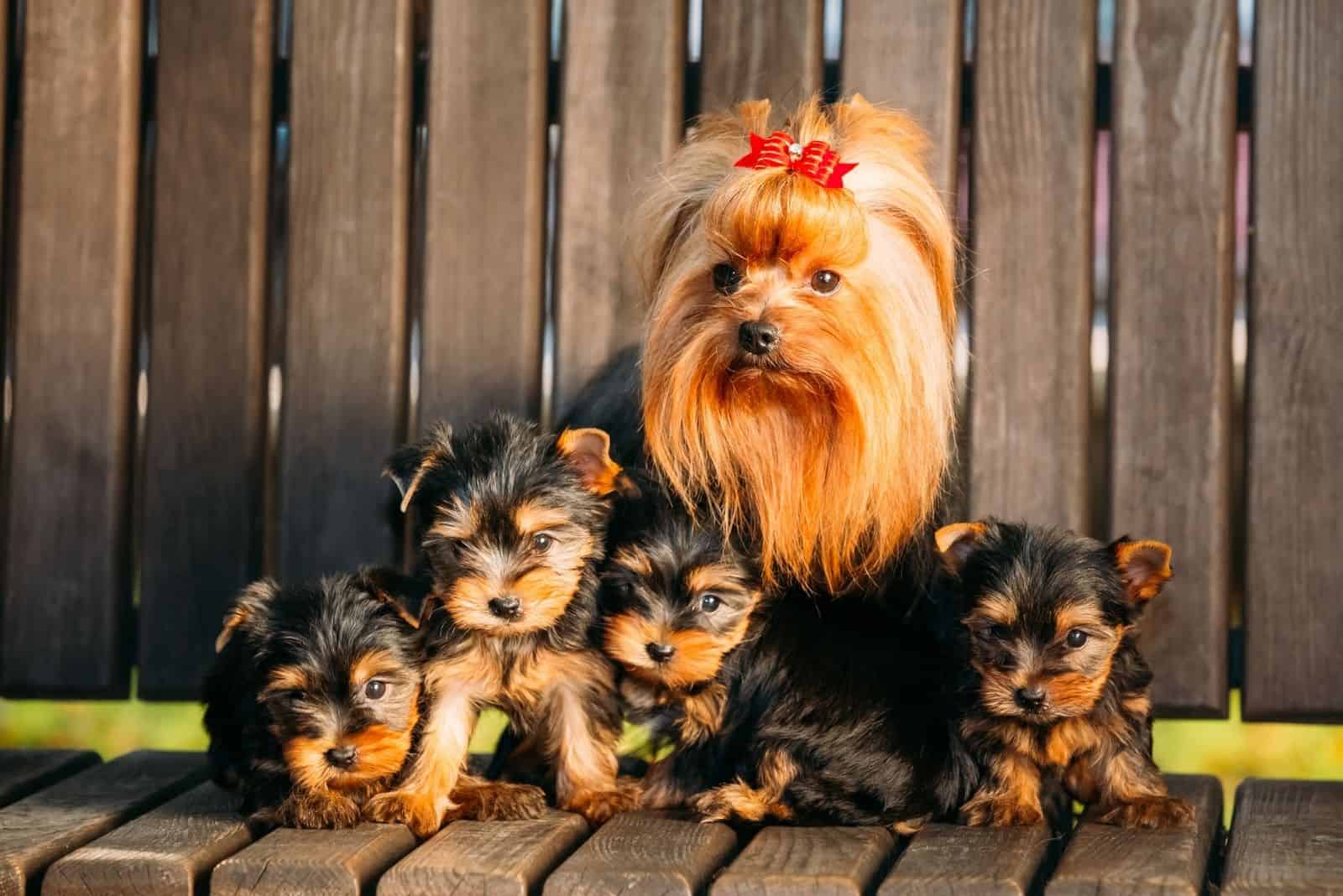If you love small dogs, you’re bound to have a soft spot for the Yorkshire Terrier.
For many years, this pooch has featured in the top ten of the American Kennel club’s list of the 202 most popular dog breeds. Although their popularity has dipped slightly recently in the US, they’re still a big hit with dog lovers everywhere.
Anyone who has owned a Yorkie knows the joy of having one as their best friend. They are small dogs with big personalities: feisty, fun, affectionate, and courageous. These dogs love attention and can be demanding at times, but it’s easy to forgive that cute little face.
If you’re thinking about mating your Yorkie or you’re looking for general information about Yorkie pregnancy, we’ve put together a few facts to increase your knowledge.
Aside from answering the question, how many puppies can a Yorkie have? We’ve thrown in some other questions and issues of interest.
How Many Puppies Can A Yorkie Have In Their First Litter?
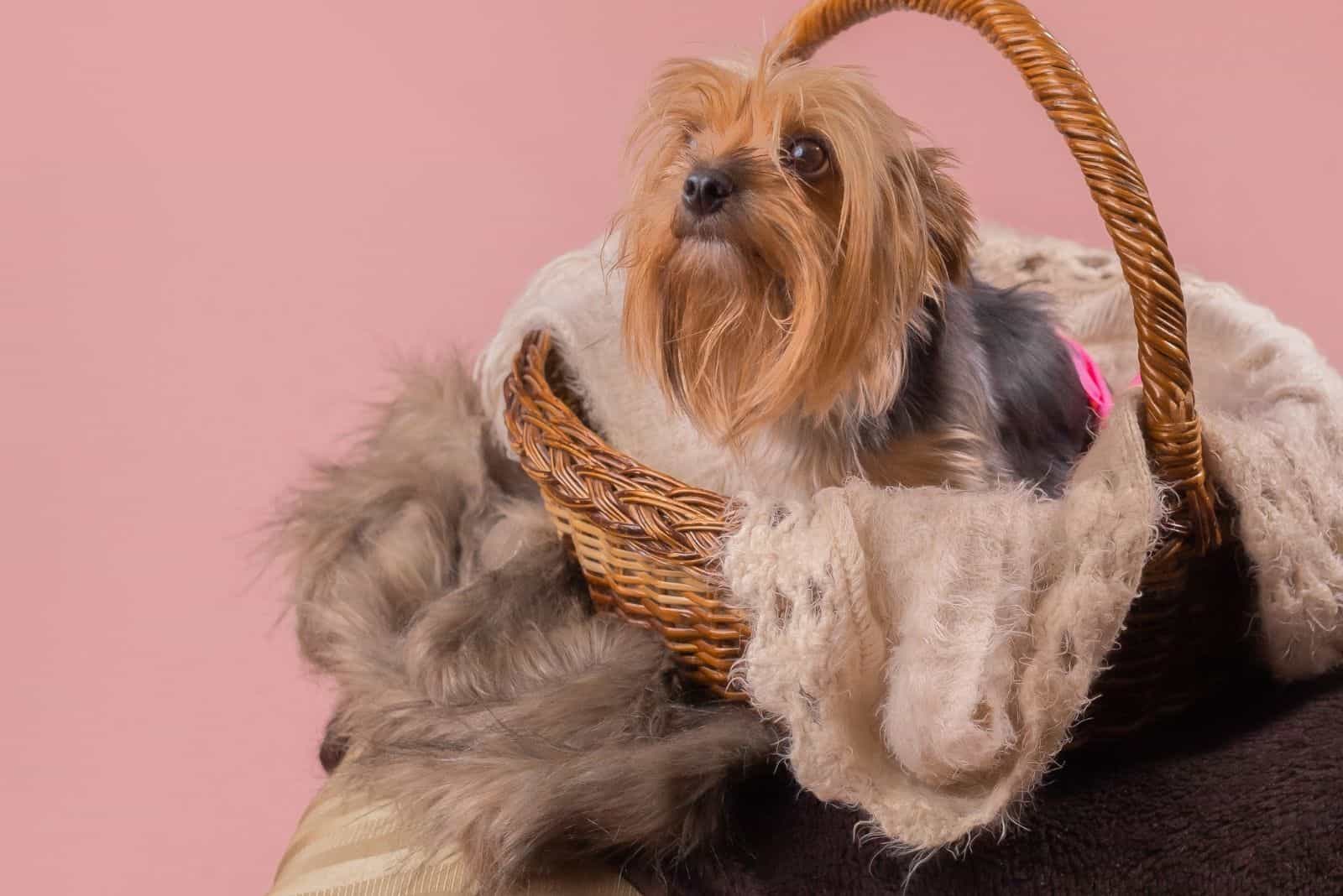
A young Yorkie will usually have between one and three puppies in her first litter. The actual number will depend on her age, size, weight, and general health at the time.
For example, a very young, petite, moderately healthy female is likely to produce one puppy in her first litter. Litter sizes tend to grow with age and experience, especially if the female is healthy and has a good weight.
It’s recommended that a female Yorkie is bred after her second heat cycle but before she is five years old. As a rule, they should not have their first litter before they reach two years of age.
While it’s tempting to breed her as soon as you can, it increases the risk of problems that may harm the mother or the pups, and it could even cost them their lives.
Everyone knows how cute Yorkshire Terrier puppies are, so it’s understandable that Yorkie owners might want their pooch to have some. However, we need to weigh the pros and cons and be aware of the risks, and we should also ask ourselves whether it’s the right thing to do.
Average Litter Size For A Yorkie
The American Kennel Club (AKC) puts the average Yorkie litter size at 3.3, which seems a little bizarre. After all, how does a dog give birth to a third of a puppy?
We’re kidding, of course. This number has been produced using statistics, but here in the real world, we can say that the average litter size for a Yorkie is between 2 and 5, with 3 or 4 pups being the norm.
That figure is pretty low, as the average litter size for all dog breeds is between five and six pups. Some dogs can give birth to as many as twelve puppies in one go!
The main reason for the small litter size is that the Yorkie is so tiny. Big dogs have more room inside; therefore, they can safely carry more puppies. Small dogs simply don’t have enough space in their little bodies to cope with more than a handful of pups*.
In some cases, tiny dogs will give birth to one puppy, sometimes called a singleton.
All kinds of factors can affect litter size, including the size and age of the female and the age of the male. The health and nutrition of the mother (known as the dam) during pregnancy also has a role to play.
Some sources claim that the time of year affects litter size. If your Yorkie gives birth in spring, her litter is likely to be bigger than it would be in the fall!
*The Pekingese goes against convention here, sometimes giving birth to as many as ten puppies!
Can A Yorkie Have 6 Puppies?
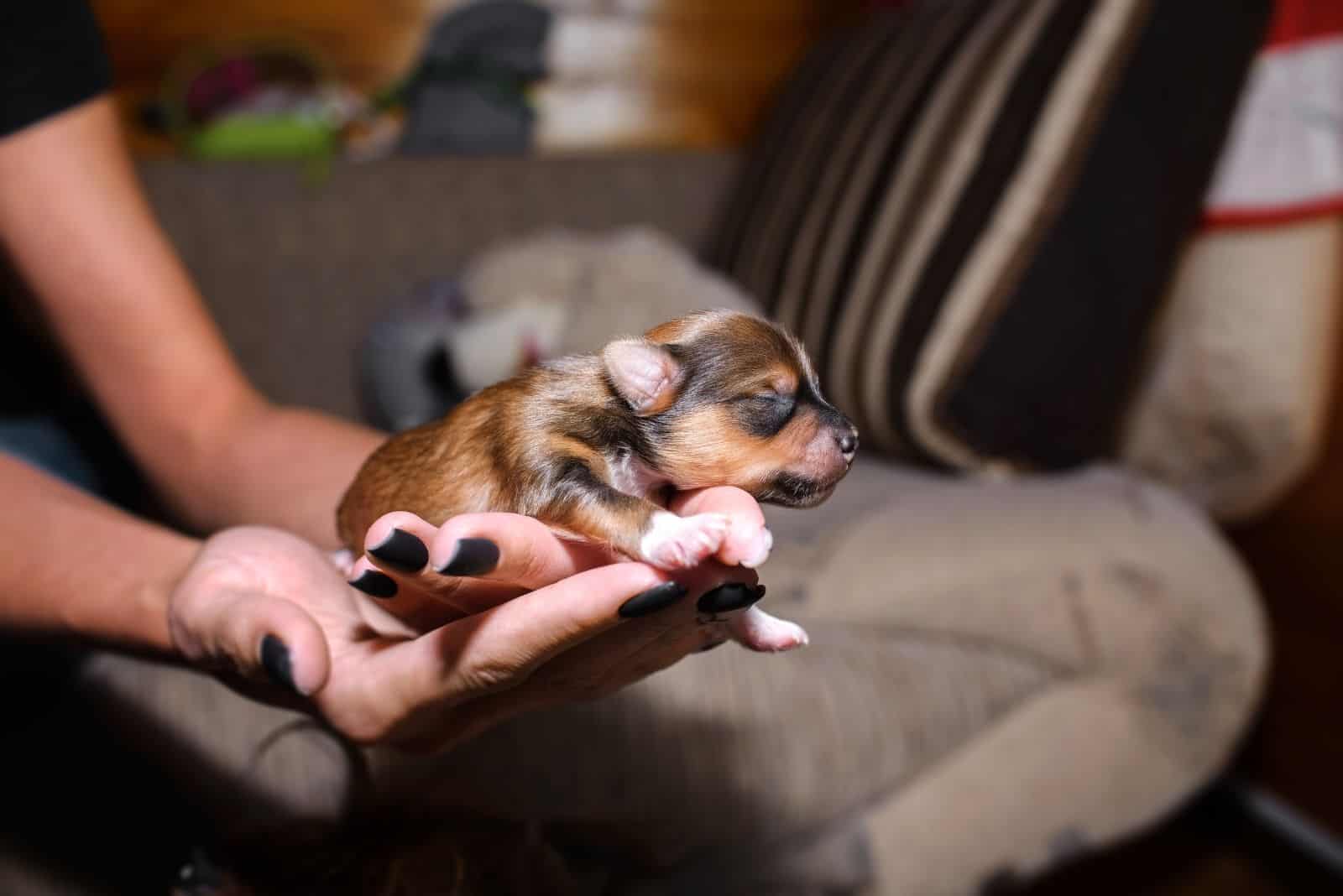
Yes, in theory, a Yorkie can have five or six puppies in a litter. They have been known to produce as many as eight or nine in rare cases, and this tends to happen in older, larger females that have experienced several previous pregnancies.
So, when we ask, how many puppies can a Yorkie have? They can have large litters of six, maybe more. However, the more pups there are, the more likely that some will be stillborn. The chances are that some will only live for a day or two out of those that do survive.
On the whole, these little dogs should have three, maybe four pups, and no more.
Experienced breeders know all about the challenges of dog pregnancy and will have a rough idea as to the number of puppies their dog will produce.
How Long Is A Yorkie Pregnant For?
The Yorkie gestation period typically lasts between 58 and 68 days from conception. Although the pups can arrive any time between these dates, most female Yorkies give birth around day 63.
If your pregnant Yorkie has reached day 67 without any sign of the pups, you should contact your vet immediately.
It’s a precarious time for any mother, but the Yorkie’s small size increases the risk of problems. Keep a close eye on her and look out for danger signs.
How Many Times A Year Can A Yorkie Mate?
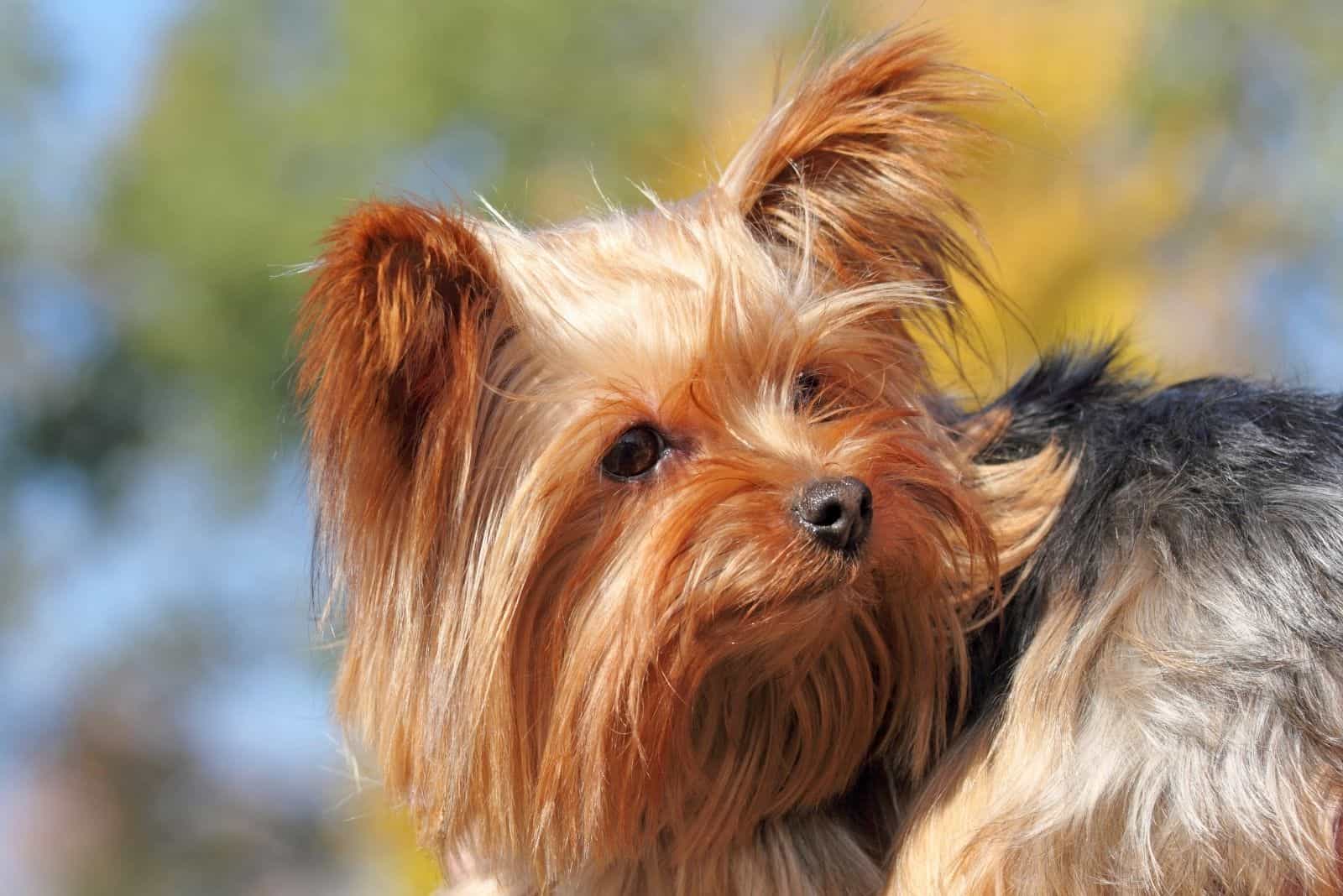
In a sense, this is similar to our main question, how many puppies can a Yorkie have?
Instead of asking how many times can they mate, it’s more ethical to ask how many times should they mate.
We should be clear: mating is not the same as breeding. On average, dogs can mate three times before the female becomes pregnant. For the purposes of our study, how many puppies can a Yorkie have? We’ll say that mating refers to a successful union between the male and female Yorkie.
Male Yorkies are lucky (as are all male dogs) in that they can mate as many times as you want – in theory. Females aren’t so fortunate, as they are the ones that carry and give birth to a litter of puppies. Yorkies are highly fertile, often conceiving the first time they mate.
Going through gestation and whelping takes its toll physically and mentally, and they need time to recover fully before becoming pregnant again.
Responsible, ethical breeders rarely make their females give birth more than once, possibly twice, a year. They will even rest the females for a year or two before trying again. After all, it’s never about the money; it’s about improving and preserving the breed.
In answer to the question, a male Yorkie can mate several times a year. A female Yorkie can also mate several times in one year, but if mating is successful, she needs love, care, and attention while she grows the little lives within her. She then needs plenty of time for rest and recovery after giving birth.
We should mention puppy mills at this point, as this is one of the main areas where they fail. Female dogs are forced to produce as many litters as possible, with little time for recovery. Eventually, they are worn out and no longer of any use, which is when they are discarded. The lucky ones make it into dog shelters, while others are dumped or worse.
So, to recap: although it’s possible for a female Yorkie to successfully mate and produce up to three litters a year, it is not ethical, fair, or responsible to do so. Ideally, she will mate once (possibly over three mating sessions) and produce a single litter.
How Many Times Can A Yorkie Get Pregnant?
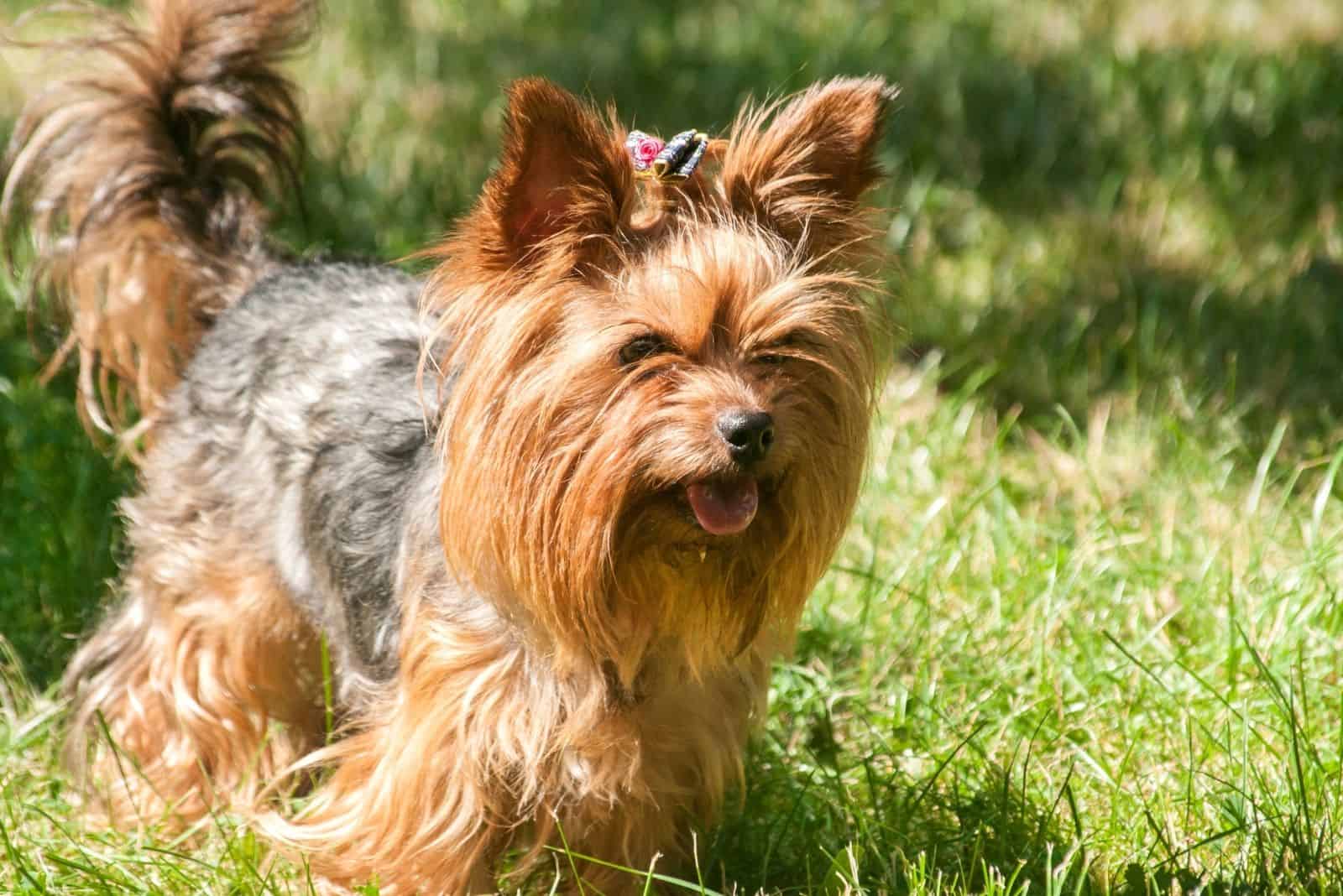
Again, we have to ask ourselves if this question is phrased the right way: how many times should a Yorkie get pregnant?
To most of us, it’s a reasonable enough question. Nevertheless, an unethical person may need the answer for all the wrong reasons, as we saw in the previous section about puppy mills.
However, let’s assume that you’re asking out of genuine curiosity rather than looking to exploit a beautiful little dog for money!
Although female Yorkies generally become sexually mature between 6 and 18 months of age, this can happen when they are 4 or 5 months old. However, they are neither socially mature nor fully developed physically at this time, so mating them would be a big mistake.
As a rule, it’s best to wait until after they come into heat for the second time before trying to breed them. You should also do this well before the dog reaches the age of 5 years.
If your dog reaches 15 months and hasn’t gone into heat, you need to consult your vet as there may be a problem.
Yorkie females typically come into heat every five to eight months. So, assuming your dog is sexually mature by 12 months and has her second heat period at around 18 months, she is ready to mate.
The generally agreed cut-off point for dog breeding (for females) is seven years of age. Breeding dogs after this age is unfair, unethical, and could lead to severe health problems.
Therefore, a Yorkie could, in theory, become pregnant twice a year from around two years to 7 years. This potentially means that a Yorkie can become pregnant ten times during her lifetime.
However, this could be described as animal abuse. Dogs are neither our playthings nor are they there to be taken advantage of as a means of making money.
Reputable breeders treat their dogs well, mate them occasionally, and retire them early. As a general rule, the best dog breeders never allow their dams to give birth more than three or four times.
Yorkie Pregnancy: Knowing The Signs
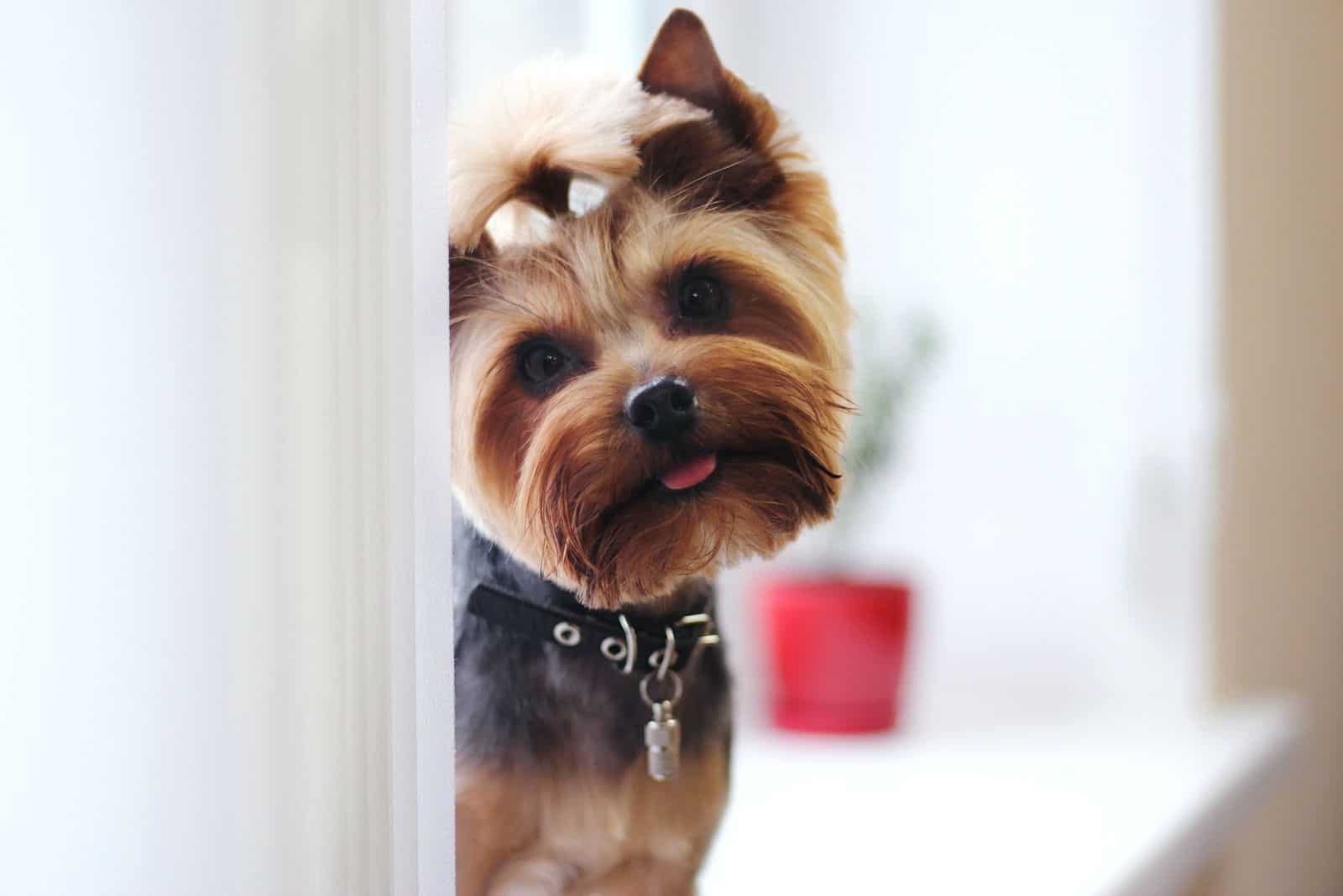
There are only two possible scenarios for your Yorkie becoming pregnant: either it was planned, or it wasn’t.
The latter possibility is the more worrying of the two, as you may not know the father’s breed. If it was a larger dog, there is a risk that the pups will be too big to be born naturally. There’s also a chance that you won’t realize that your pooch is expecting straight away. If you do suspect this or have any doubts, then book a visit to the vet to get your dog examined.
Hopefully, your Yorkie’s pregnancy is planned, and you are looking forward to the happy event. Whatever the circumstances, if your Yorkie is pregnant, you might notice these telltale signs:
• Sleeping more than usual. As the hormones start to change your dog’s body, she becomes very sluggish and reluctant to move about much. Yorkies are usually pretty active and playful, so this will be a sure sign.
• Increased self-grooming. You’ll probably notice that she suddenly starts cleaning herself more than usual. This can become quite frantic, almost obsessive, at times.
• Nesting instinct. She will stay in her bed for longer and may even make her own ‘nest’ in a dark corner. She may gather soft materials to line this, including plush toys, blankets, clothes, and cushions.
• Weight gain. She will begin to put on weight, although the abdomen usually swells later in the pregnancy as the pups develop.
• Change in nipple size and color. You might even notice that your dog seems to grow extra nipples! Don’t worry; they were always there but weren’t noticeable. Your pooch’s body is getting ready to feed those hungry mouths.
• Change in appetite. Your dog will likely eat less in the early stages as she isn’t feeling too great. It’s a bit like how human females go through the ‘fun’ of morning sickness. However, after a while, there’s a chance that she’ll start to eat more. During pregnancy, feeding your dog can be tricky, but she must get the nutrients she needs to keep herself and her pups healthy. Consult your vet if you need help choosing good-quality dog food.
• Firm stomach. As you pet her, you may notice that her belly is firmer than usual. Don’t press too hard, as she will be tender and may react badly.
• Behavioral changes. All those hormones bouncing around might make your dog act up. She may become clingy, seeking more cuddles than usual. At other times, she’ll disappear into another room to seek solitude. It’s nothing to worry about, just give her some space when she needs it and be there to comfort her when necessary.
Your vet can confirm pregnancy via a blood test after 22 to 25 days. This test looks for the hormone relaxin, which is only present during pregnancy. However, you won’t be able to see the pups by ultrasound or x-ray just yet, and ultrasound may be able to detect the pups’ heartbeats.
Your vet will probably check for the pups by palpation (using the fingertips to feel your dog’s abdomen gently). They will be trying to find the uterus and any developing pups. It isn’t a good idea to do this yourself as you risk damaging the puppies or hurting the mother.
At 42 days, the ultrasound will find the pups, enabling the vet to check them for any abnormalities. The vet should tell you how many pups there are by day 45, as their tiny bones will be fully calcified by then.
Phantom Pregnancy
A dog can display all the signs of pregnancy, but there are no pups, which is known as false or phantom pregnancy.
Although this condition isn’t fully understood, it’s believed to be connected with the hormones produced in the ovaries. These are created after the heat cycle in readiness for pregnancy, but production usually stops if the dog is not pregnant.
In cases of false pregnancy, the ovaries keep pumping out these hormones, giving the impression that the dog is carrying Yorkie puppies.
It’s a distressing experience (for you and your furry friend!), so be ready to give her extra care and attention if this happens. You should also seek professional help if the symptoms are acute, as your dog may need sedatives or tranquilizers. Your vet may prescribe Cabergoline, a hormone to combat the ones that are causing the problem.
Milk production can cause your poor pooch to be sore and uncomfortable. Mastitis is common in cases like this, so you may need to help her with a hot and cold compress or diuretics to reduce milk production. Cabergoline can help with this, but you may also need antibiotics.
Yorkie Pregnancy: The Whelping Process

It is essential to be aware of all the signs and red flags during whelping, as your dog’s life (and her puppies) may depend on it. If you spot any danger signs, you must seek help from a qualified veterinary surgeon.
We’ll go through the stages so you have a good idea of what to expect and what you need to do:
• Set up a whelping box, preferably in a quiet part of the home. This can be a large cardboard box with one side folded down or a purpose-made whelping box from a pet supplies store. Line this box with plenty of paper sheets (newspaper is fine), so you can remove layers quickly to keep the area clean.
• Take your dog’s internal temperature twice each day, starting precisely one week from her due date. If the temperature falls below normal, the puppies will probably arrive within 24 hours.
• As labor begins, your dog will probably lose her appetite completely. It is not uncommon for dogs in labor to vomit. As alarming as it might seem at the time, it should be over pretty quickly.
• When she enters labor properly, and the contractions begin, your dog may cry, shake, and whine. Stay close by and offer comfort, but don’t be tempted to give her any medication without consulting your vet.
• The pups will appear one by one, sometimes straight after each other, but often with a gap of about 2 hours. If 2 hours pass without another pup (and you know there are more inside!), you should call your vet for advice.
• Each pup has its own amniotic sac. Although these can get torn, they are usually intact. Mom will bite through the umbilical cord and gently lick the pup to remove the sac. This licking motion stimulates and cleans the puppy.
• It is natural for the mother to eat any birthing tissue, including the umbilical cords, amniotic sacs, and placenta.
• When all the puppies have arrived, ensure that the bedding is clean and dry. All the pups should move to the mom for feeding. Watch for smaller, weaker pups and carefully move them into a feeding position. All the puppies must feed regularly, or they’ll be at risk of hypoglycemia.
Congratulations, you’re now a Yorkie grandparent!
Ensure the new mother all the care she needs over the next few days and weeks.
Teacup Yorkies: The Unwelcome Truth

Yorkshire Terriers are tiny dogs, which is one feature that makes them so adorable. This isn’t small enough for some people, which is why Teacup Yorkies were invented.
However, it’s best to avoid buying teacup dogs of any breed.
While this isn’t a popular opinion, it is based on the facts.
Small dogs already face severe health problems and complications that don’t usually affect bigger dogs, and making smaller versions increases the risk.
It takes many years of careful breeding to produce a breed like the Yorkie. Breed standards are set for a good reason, and the best size for the Yorkie is between 7 and 8 inches with a weight of around 7 pounds.
So, why are Teacup Yorkies a bad idea?
Sizes for teacup dogs vary, as there are no official breed standards. Even so, most teacup dogs weigh less than 5 pounds.
These dogs are more at risk of hypoglycemia, a sudden drop in blood sugar levels. Teacup Yorkies don’t have enough muscle mass to store glucose. As a result, they cannot regulate the sugar levels in their blood, often leading to seizures, brain damage, and death.
Collapsed trachea, heart problems, blindness, digestion problems, and breathing difficulties are common health issues for teacup dogs. These dogs need to be fed tiny amounts several times a day, as their stomach can’t hold much. They also have small bladders, so accidents are inevitable.
Tiny dogs have fragile bones, making them vulnerable to severe injury if dropped or trodden on. Most small breed deaths are due to crush injuries.
We should also mention how they are produced. Some breeders pick out the runts of the litter that occur naturally and sell them as ‘teacup’ dogs. Unethical breeders will mate two runts to create smaller dogs, resulting in weak and sickly pups. These unscrupulous people also purposely use inbreeding to produce smaller dogs, and they have even been known to starve dogs to stunt their growth deliberately.
More relevant to our topic, how many puppies can a Yorkie have? Teacup females face an increased risk of complications when giving birth, resulting in the loss of the mother and the pups.
The trouble is, micro-dogs are extremely popular right now, mostly because ‘celebs’ and influencers carry them in purses. These dogs often cost thousands of dollars, making them an attractive proposition for those who want to exploit them for money.
Finally, neither the AKC nor any other kennel club recognizes teacup dogs, and no reputable breeder ever advertises or sells them.
The Benefits Of Spaying And Neutering
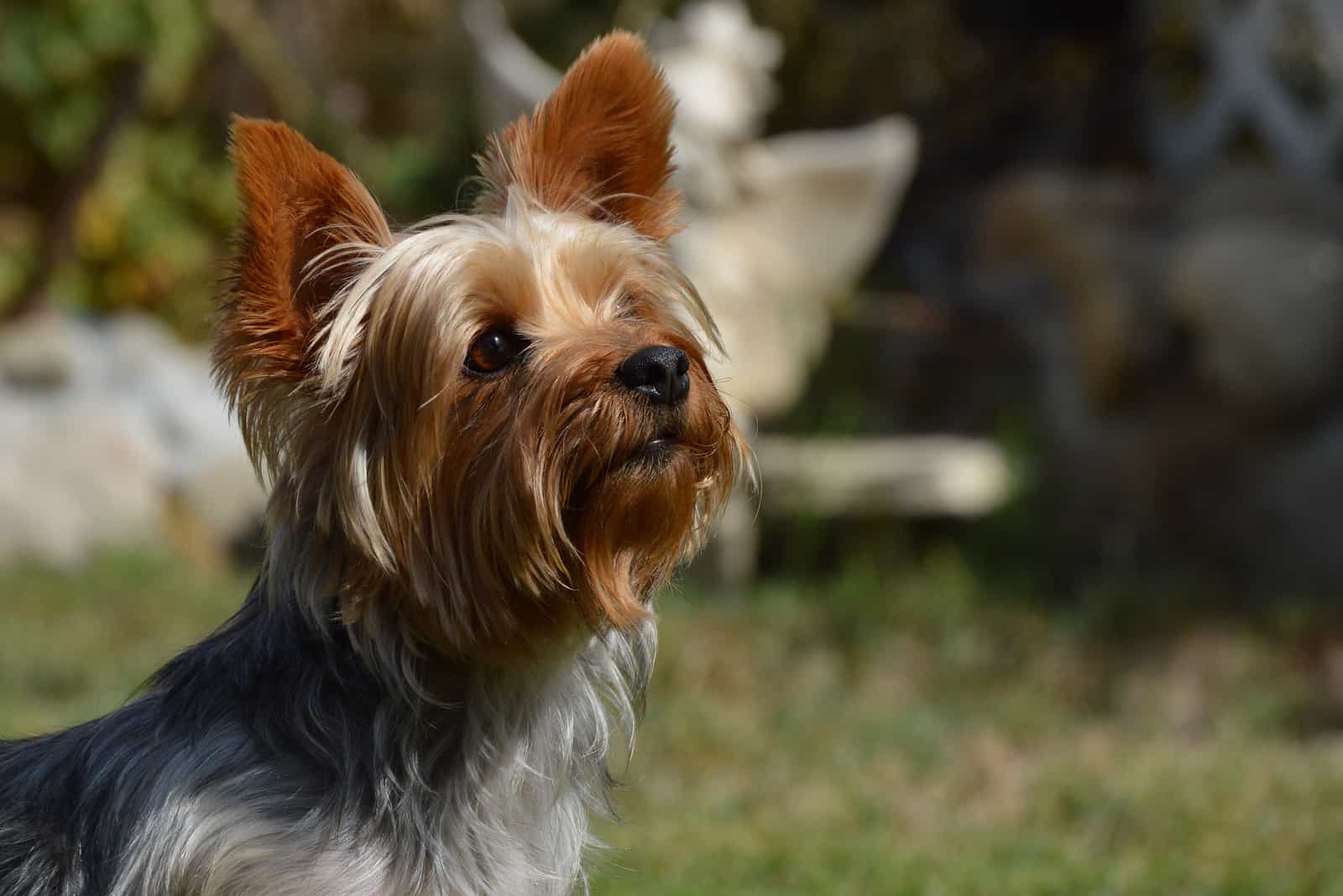
It would be wrong to cover how many puppies can a Yorkie have? Without mentioning spaying and neutering.
Responsible breeders encourage their customers to have their dogs fixed. Most include a clause that obliges the customer to comply, which is usually done for two reasons.
First, the breeder is trying to protect their stock and their business: if you have a dog from their breeding line, you could well compete with them. Second, spaying and neutering drastically reduce unwanted pregnancies.
There are more than three million dogs in shelters and rescues in the US each year, and this astonishing figure speaks for itself. Many people question the need to produce more dogs when thousands already need a home.
Aside from this, spaying and neutering are believed to offer several health benefits, and evidence suggests that the procedure dramatically reduces the risk of certain types of cancer. It can also calm dogs down and lower the chance of undesirable sexual behavior (such as humping, mounting, and seeking out females in heat). While it won’t change your dog’s personality, it will make them less prone to mood swings, especially female dogs.
It’s understandable for dog owners to consider allowing their precious pooch to mate, but it isn’t always the best idea. Before going ahead, it’s a good idea to do plenty of research so you know exactly what to expect, as Yorkies have a high risk of birthing complications. You can find a few issues that you need to look into in the next section.
You should also question why you are doing this. Is it simply to have cute puppies in your home? Are you using it to make some extra cash?
Reputable breeders are driven by a desire to improve the breed, rarely making a profit. They test the parent dogs to ensure they are healthy before including them in the breeding program. Most breeders are experts in their field, with years of experience behind them. Even so, they still sometimes encounter problems during gestation and whelping.
However, they are equipped with the knowledge to help the mother and her pups. They also have several contacts they can call on for expert assistance, such as veterinary surgeons if anything goes wrong.
Here’s the crunch: if you want to breed your pooch, you need to be 100% sure of what you’re doing, research the subject thoroughly, and seek veterinary help and advice.
If you’re not, it’s advisable to get your dog fixed.
Before Breeding Your Yorkie
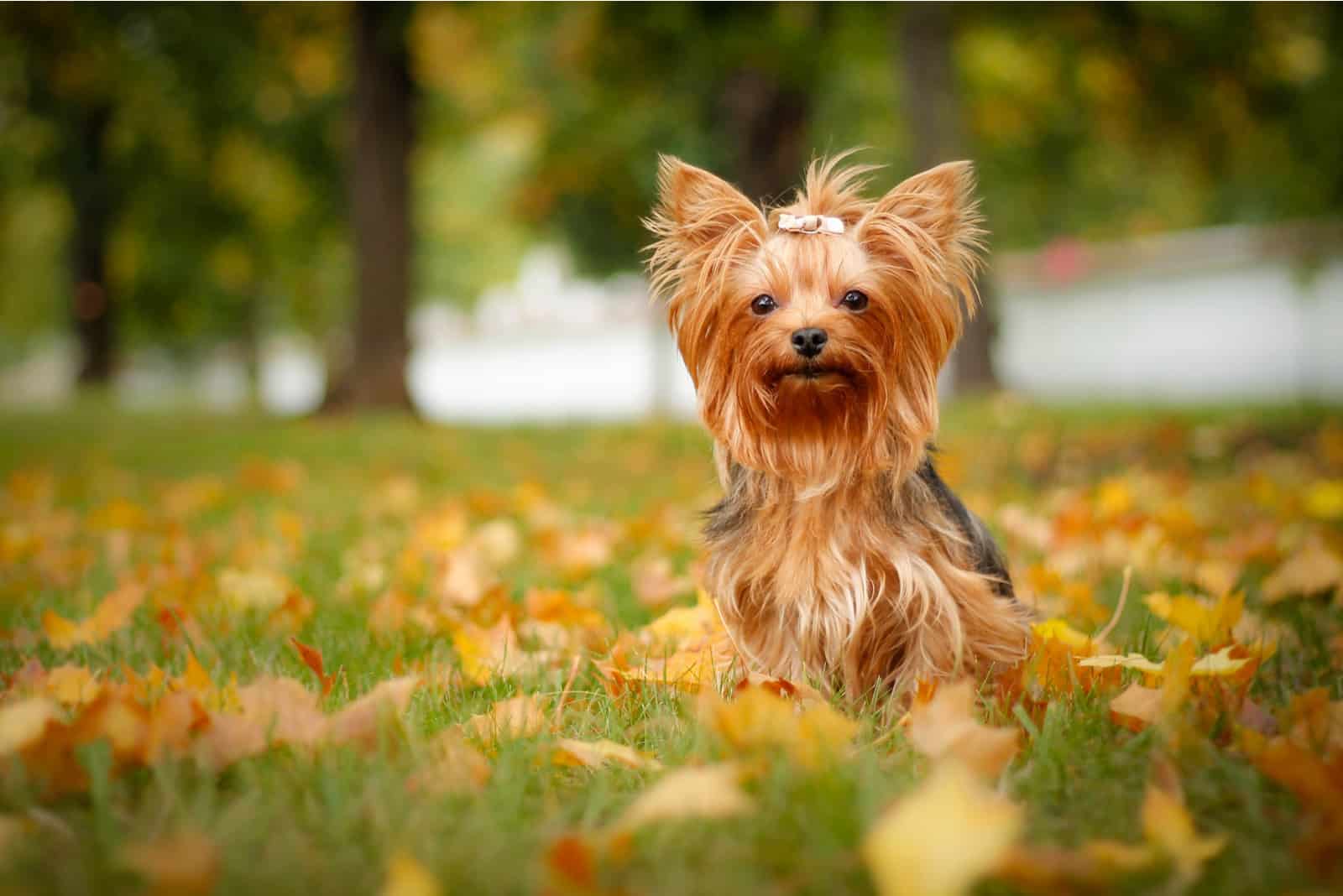
Are you still thinking, I want to breed my Yorkie? Then consider these points:
• Medical emergencies – What plans do you have in place if things go wrong? Keep your vet on speed dial and let them know what you plan. You should also be well prepared for the financial costs should your dog need an emergency C-section.
• Care – not only will you have an exhausted mother dog to look after, but you’ll also have three or four (possibly more) squirming, fragile puppies. Mom will do her best (provided there are no problems bonding), but you’ll need to be on hand in case you’re required. This will take up a lot of your time, and you must commit yourself fully. This is your responsibility alone.
• Male Yorkie size – before mating, you must pick the male carefully. Younger males will be more likely to increase the litter size, so choose an older one if possible but not too old (after five years of age, their sperm count drops). The male should also be smaller than the female, ensuring that the puppies are smaller. Using a larger male increases the risk of big pups, increasing the risk of complications and putting the mother and her offspring in danger.
• Health – your Yorkie should be in excellent health and have no genetic conditions that can affect her pups. The same applies to the male she is mated with. Both should be tested to ensure they are suitably healthy and will produce sound, viable puppies.
• Inbreeding – avoid this at all costs. Breeding a father and daughter can cause significant genetic defects and even behavioral problems. Although inbreeding is present to a degree in all purebred dogs (given the more respectable name of line-breeding), it is usually part of a carefully planned breeding program.
Yorkie breeding is a specialist subject, as with any dog breed, and it takes many years to gain the knowledge and experience to do this properly. It also requires a good ethical and moral outlook, which is sadly lacking in many cases.
How Many Puppies Can A Yorkie Have? The Conclusion
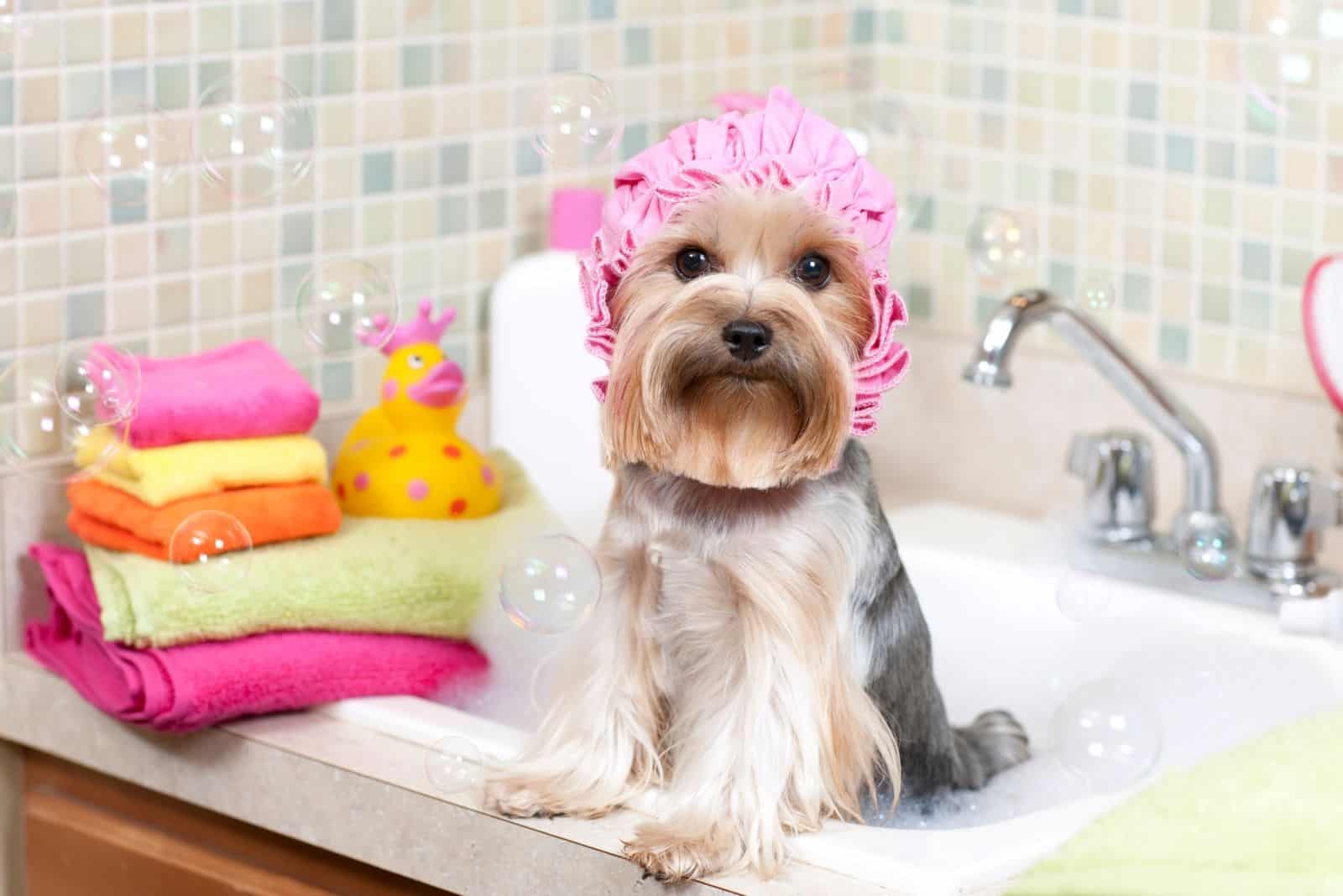
As we’ve seen, the answer to this question isn’t simple. While the average litter size is between 2 and 5 (similar to the Chihuahua), different factors can influence the number of pups that your dog gives birth to.
Young dogs that have just matured will typically produce fewer pups, while older dogs will probably have more, usually no more than 5 or 6.
Accidental pregnancy is one thing, and it must be handled carefully, using all the help you can get from your veterinarian.
However, planning your dog’s pregnancy is another matter. Before going ahead, you need to ask yourself if this is the right thing. Is your furry friend healthy and robust enough to go through the trauma of gestation and whelping? Are you fully prepared for all the possibilities? Will the pups be free from genetic conditions or birth defects?
Remember, your dog doesn’t have a choice here, and she will be doing all the work and facing all the risks. Also, there are already far too many unwanted dogs out there in shelters and rescues.
If you still want to go ahead, and you’re doing it for the right reasons, then make sure you prepare yourself thoroughly. While this guide provides some information, there’s nothing better than expert medical advice from an animal specialist.
Finally, good luck! Here’s to a safe delivery and a litter full of happy, healthy Yorkies.
